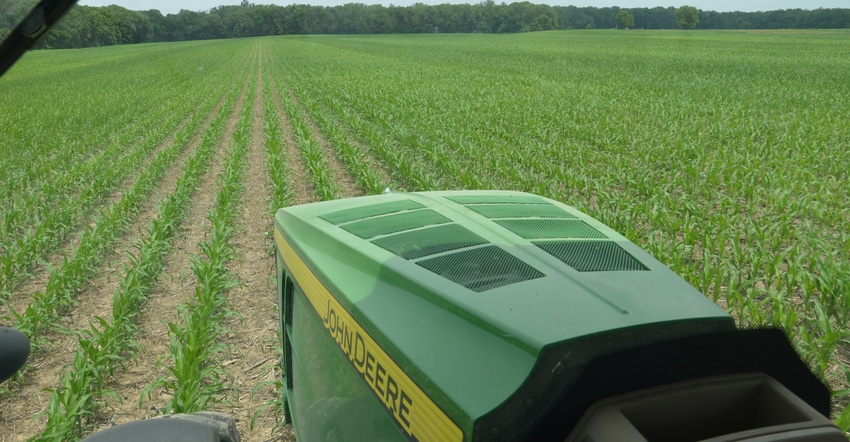
Various people have asked Bob Nielsen where they could cut costs on crop production budgets for 2019. Lagging grain prices due to recent large crops and rising input costs make it a timely question.
“I usually begin by telling them to look for places where you can perhaps cut some cost without impacting yield,” says Nielsen, Purdue University Extension corn specialist. “If something you cut lowers yields, then you’re likely not helping yourself.”
Since nitrogen cost makes up a major part of the budget for corn production, it’s a natural place to look to cut costs, Nielsen says. Whether you can cut rates partly depends upon how much you’ve applied previously. If you’ve already backed down to recommended rates in the past, you may not be able to trim rates more.
“We suggest looking at your system for overall efficiency of nitrogen application,” he says. “We know that fall applications here [in Indiana] aren’t as efficient. You risk more nitrogen loss. Our work indicates that the most efficient time to apply nitrogen is near planting or through the traditional sidedress period.” Nielsen believes that’s where you’ll get the most bang for your buck spent on nitrogen.
Target rates
Nielsen and his colleague, Jim Camberato, have analyzed a sizable amount of data, much of it from replicated on-farm trials, on nitrogen rates in Indiana over the past decade. They’ve arrived at recommendations based on those trials which they believe are good starting points for setting N rates on your farm.

This table assumes a corn price of $3.50 per bushel. Nitrogen rates are total applied from all sources. Find this document at kingcorn.org/news/timeless/NitrogenMgmt.pdf.

“We found that the optimum economic N rate varies widely from one part of the state to another,” Nielsen says. “In west-central Indiana, you can typically get by applying considerably fewer pounds of N per acre, and still harvest as much or more corn per acre than, say, in east-central Indiana.”
This is largely a function of soil types and environmental conditions, which vary across the state, Nielsen says. Nielsen and Camberato arrived at recommended nitrogen rates in each of Indiana’s nine crop reporting districts. Due to similarities, they were able to combine some crop reporting districts when developing recommendations.
“We suggest starting with the recommended rate in your area if you’re wanting to maximize N benefit without impacting yield,” Nielsen says. “Tweak rates based on your local conditions and how the season progresses.”
For example, if it’s a wet spring and you’ve already applied some N, you may want to up your total N budget by 20 to 30 pounds per acre to account for higher potential N losses. On the other hand, if it’s dry in April and May, you may be able to back off 20 to 30 pounds per acre, he notes.
“Be sure to take credit for all the nitrogen you apply, including in starter fertilizer, when figuring total rate per acre,” Nielsen concludes.
About the Author(s)
You May Also Like




